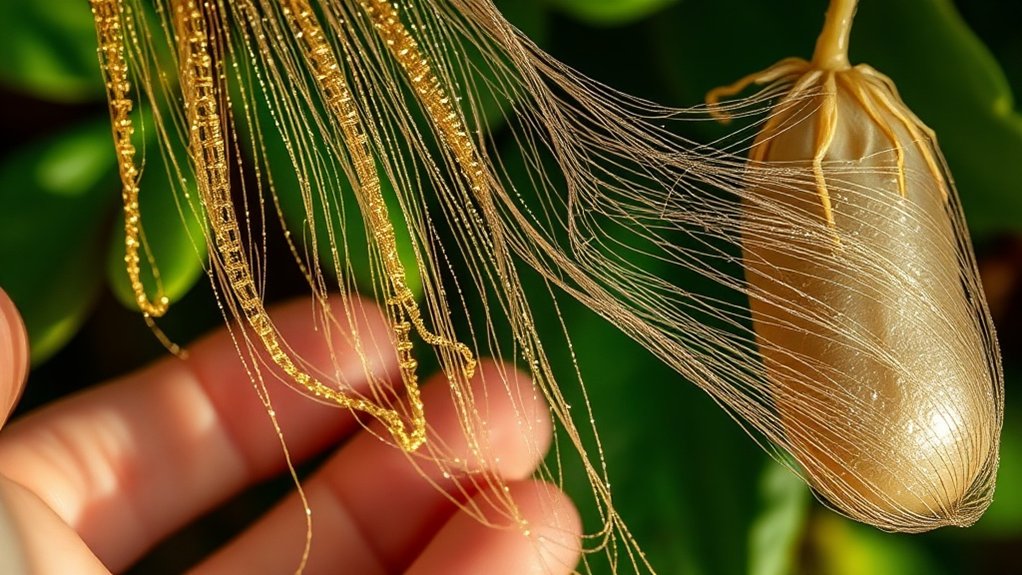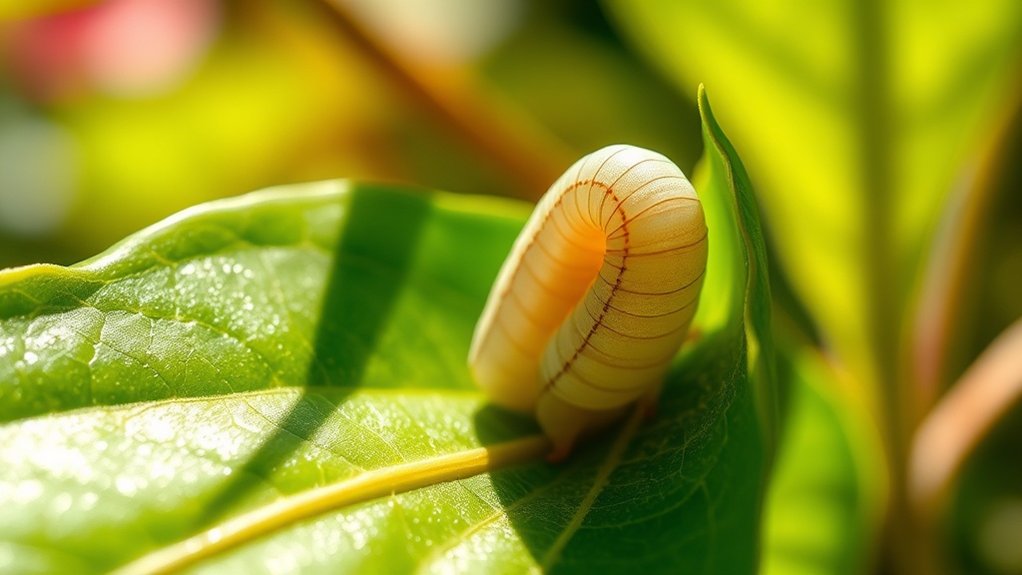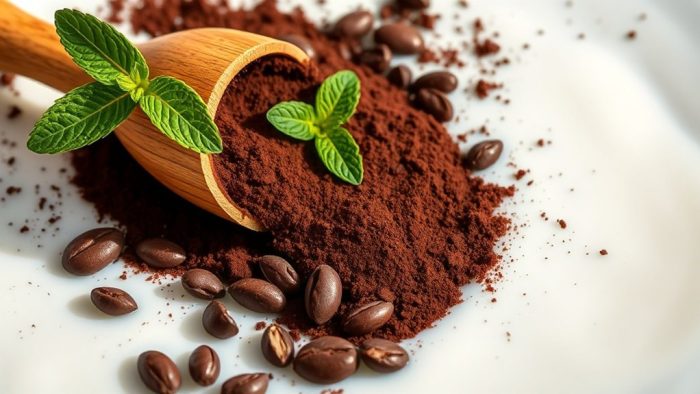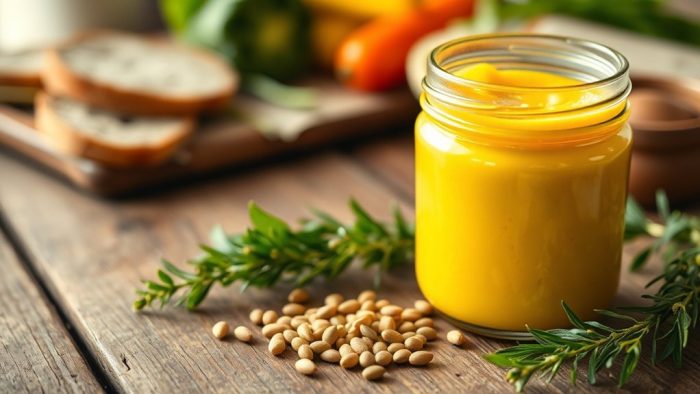Is Silk Vegan

No, silk isn’t vegan. Traditional silk production requires killing approximately 1,000 silkworms per shirt—each cocoon is harvested before the moth emerges, killing the pupa inside through boiling or heating. This process results in roughly 1.2 trillion silkworm deaths annually. Since veganism rejects all forms of animal exploitation, and silkworms are sentient beings capable of experiencing pain, silk contradicts core vegan principles. Even “peace silk” involves commodification concerns. You’ll find several plant-based alternatives that align with vegan ethics.
What Is Silk and How Is It Made?

Silkworms, primarily the domesticated Bombyx mori species, produce silk by secreting a protein called fibroin to construct protective cocoons during their pupal stage.
To harvest silk, manufacturers extract threads from these cocoons through a process that kills the developing pupae inside. You’ll find that production methods typically involve boiling, gassing, or freezing approximately 3,000 silkworms to yield just one pound of silk.
This results in roughly 1.2 trillion silkworm deaths annually worldwide. Since silk originates entirely from these insects, it’s categorically classified among animal products.
The industry faces growing ethical concerns as research suggests insects may experience distress during harvesting. Understanding this production process is essential when evaluating silk’s compatibility with vegan principles.
The Silk Production Process: From Silkworm to Fabric
The transformation of cocoons into wearable fabric involves a precise yet lethal industrial process. Understanding silk production requires examining how Bombyx mori larvae create their protective casings, only to have them harvested before metamorphosis completes.
You’ll find that silkworms are killed through systematic methods designed to preserve thread integrity:
- Boiling water scalds the pupae inside their cocoons, loosening the sericin protein that binds silk fibers
- Industrial ovens bake thousands of cocoons simultaneously at controlled temperatures
- Freezing chambers halt the silkworms’ development while maintaining cocoon structure
- Unwinding machines extract continuous threads from multiple cocoons, creating the fabric used in luxury textiles
This reality presents significant challenges for vegan fashion advocates.
When you’re evaluating ethical clothing choices, silk production’s dependence on animal death becomes impossible to reconcile with vegan principles.
Why Silk Is Not Vegan: Animal Exploitation Explained

You can’t consider silk vegan because its production requires killing approximately 1.2 trillion silkworms annually through boiling, gassing, or freezing.
These insects are sentient beings capable of experiencing pain, making their exploitation fundamentally incompatible with vegan ethics.
The silk industry systematically breeds and kills silkworms for commercial gain, which directly violates veganism’s core principle of rejecting all forms of animal exploitation.
Silkworms Killed During Production
Behind every silk garment lies a staggering death toll: approximately 1,000 moths are killed to produce a single shirt.
The silk production process involves systematic animal exploitation, with 1.2 trillion silkworms killed annually before completing their natural metamorphosis.
The ethical concerns intensify when you examine the methods:
- Boiling alive: Silkworms are submerged in scalding water while still inside their cocoons
- Gassing chambers: Industrial facilities use toxic gases to kill thousands simultaneously
- Freezing deaths: Cocoons are stored at extreme temperatures, slowly killing the pupae inside
- Mass scale: Just one gram of silk demands 15 silkworm lives
This systematic killing makes silk production one of the deadliest industries globally, with annual deaths ranging from 4.1 to 13 billion.
Vegans Don’t Wear silk precisely because these practices contradict non-exploitation principles.
Insects Are Sentient Beings
While many dismiss insects as simple automatons, mounting scientific evidence confirms that silkworms possess the neurological capacity for nociception and exhibit behavioral responses consistent with pain avoidance.
Recognizing that insects are sentient beings fundamentally challenges the ethics of sericulture. When you purchase silk products, you’re supporting an industry that boils or gases approximately 1.2 trillion silkworms annually—a scale of animal exploitation that’s difficult to comprehend.
Even ahimsa silk, marketed as humane, doesn’t eliminate suffering. Disease and suboptimal conditions still cause deaths during production.
This reality contradicts vegan principles, which reject all forms of animal exploitation. The sentience of silkworms means they experience their deaths—whether through boiling, gassing, or disease—making silk production incompatible with ethical consumption standards.
Veganism Rejects All Exploitation
The definition of veganism extends beyond dietary choices to encompass a thorough rejection of animal commodification in all its forms.
Silk production fundamentally contradicts this principle, as it requires the systematic exploitation and death of silkworms—sentient animals who experience suffering. When you purchase silk, you’re supporting an industry that kills approximately 1.2 trillion silkworms annually.
The reality of silk production involves:
- Factory farms where millions of silkworms endure diseases and cramped conditions before being boiled alive
- Approximately 1,000 moths dying for a single silk shirt
- Even “ahimsa” silk perpetuating the commodification of insects and funding the broader exploitation industry
- Systemic violence against animals who can’t consent to their use
Veganism demands we recognize all animals—including insects—deserve freedom from exploitation.
Do Silkworms Feel Pain? The Sentience Question

You might wonder whether silkworms actually experience pain when boiled alive for silk extraction. Current research on insect nociception suggests they possess nervous systems capable of detecting harmful stimuli, though scientific consensus on their subjective pain experience remains unsettled.
The ethical precautionary principle argues that when uncertainty exists about an organism’s capacity to suffer, you should err on the side of preventing potential harm—particularly when billions of silkworms face this treatment annually.
Insect Pain Research Findings
How do we determine whether silkworms experience pain when their sentience remains scientifically uncertain? Research on insect pain reveals compelling evidence that silkworms possess nociceptors—specialized sensors detecting harmful stimuli.
Studies document withdrawal behaviors when these creatures encounter threatening conditions, suggesting genuine pain responses.
Consider what this means for silk production:
- Silkworm pupae thrashing violently when exposed to boiling water
- Insects repeatedly retreating from heat sources they’d previously approached
- Neural pathways lighting up in patterns resembling vertebrate pain responses
- Behavioral changes persisting long after initial harmful exposure
While definitive outcomes remain elusive, experts recommend prioritizing caution regarding sentient beings.
The ethical concerns surrounding silk production intensify when acknowledging potential suffering. If you’re committed to veganism’s core principle—minimizing harm to all capable of experiencing pain—these findings warrant serious consideration.
Silkworm Sentience Scientific Debate
Scientists continue to grapple with fundamental questions about silkworm consciousness, as neurological evidence presents contradictory implications for pain perception. Research confirms silkworms possess pain receptors and demonstrate behavioral responses to harmful stimuli, yet definitive proof of their sentience remains elusive.
Their complex nervous systems suggest they might experience distress during silk production processes, particularly when boiled or gassed alive.
You’ll find experts increasingly advocate for precautionary approaches, recommending humane treatment despite scientific uncertainty. The ethical concerns surrounding silk production intensify as evidence accumulates regarding insect pain capacity.
While researchers can’t conclusively determine whether silkworms feel pain as mammals do, their neurological complexity warrants serious consideration. This scientific debate directly influences whether silk aligns with vegan principles, prompting you to weigh potential suffering against limited conclusive evidence.
Ethical Precautionary Principle Applied
When scientific certainty remains out of reach, the ethical precautionary principle demands that you prioritize potential suffering over convenience. This framework suggests treating silkworms as sentient beings capable of pain until evidence definitively proves otherwise.
For vegans, this principle directly challenges silk production’s moral legitimacy.
Consider the conditions silkworms endure:
- Thousands of larvae confined in crowded trays, vulnerable to diseases that kill 10-47%
- Cocoons plunged into boiling water while pupae remain alive inside
- Bodies convulsing as extreme heat penetrates their protective shells
- Industrial operations repeating this process millions of times daily
The precautionary approach recognizes that absence of proof isn’t proof of absence. When sentience remains scientifically debatable, ethical responsibility requires assuming its presence.
This conservative stance leads most vegans to reject silk entirely.
Peace Silk Vs Traditional Silk: Is There a Humane Alternative?

Many consumers seeking ethical alternatives turn to peace silk (ahimsa silk) as a supposedly humane option, but this designation warrants careful scrutiny.
While traditional silk production involves boiling or gassing silkworms alive—resulting in billions of animal mortality cases annually—peace silk allows moths to emerge before harvesting. However, this distinction doesn’t eliminate ethical implications.
You’ll find that peace silk production still involves captivity, selective inbreeding, and welfare concerns that producers can’t consistently verify post-harvest. The industry’s scale remains problematic: between 4.1 and 13 billion silkworms die yearly across both production methods.
Reports indicate suffering persists even in “humane” operations, making peace silk’s claims questionable. These considerations explain why many vegans reject both traditional silk and its supposedly compassionate alternatives.
Environmental Impact of Silk Production
Beyond the animal welfare dimensions, silk production generates substantial environmental consequences that compound its ethical problems. The industry ranks poorly on the Higg Materials Sustainability Index, demonstrating significant contributions to global warming and fossil fuel consumption.
These environmental impacts extend far beyond animal exploitation:
- Industrial facilities processing 4.1 to 13 billion silkworm cocoons annually, releasing emissions into surrounding ecosystems
- Disease-ravaged farms where 10% to 47% of silkworms perish from parasites and inadequate conditions
- Resource-intensive manufacturing chains converting thousands of moths into single garments
- Chemical treatments required for silk processing, contaminating water systems
Fortunately, sustainable and eco-friendly alternatives are emerging.
Alternative fabrics like TENCEL™ and plant-based materials offer reduced ecological footprints while eliminating the need for animal-derived textiles, providing you with ethically sound choices.
Vegan Silk Alternatives: Plant-Based and Synthetic Options

As demand for ethical fashion intensifies, vegan silk alternatives have evolved from niche products into mainstream textile solutions that match or exceed traditional silk’s performance characteristics.
You’ll find plant-based fabrics like TENCEL™, manufactured from sustainably sourced wood pulp, offering biodegradability without animal exploitation.
Ramie delivers wrinkle-resistance and superior dye absorption, while cupro uses cotton linter—a production by-product—to achieve silk’s distinctive drape.
Orange silk represents breakthrough innovation, extracting cellulose from citrus waste to create luxurious textiles.
LENZING Ecovero completes the sustainable fabric portfolio, consuming considerably less water and generating reduced emissions compared to conventional silk production.
These silk alternatives provide you with technically sound, ethically defensible options that eliminate animal harm while meeting rigorous performance standards for contemporary fashion applications.
Comparing Vegan Silk Alternatives: Properties and Performance
When evaluating vegan silk alternatives against traditional silk and each other, you’ll need to assess four critical performance metrics: tensile strength, moisture management, thermal regulation, and textile longevity.
TENCEL lyocell excels in moisture absorption while maintaining its closed-loop production standards.
Cupro delivers superior drape characteristics comparable to conventional silk’s fluid movement.
Orange silk demonstrates adequate durability despite its innovative citrus waste origins.
LENZING Ecovero balances performance with reduced water consumption throughout manufacturing.
Performance considerations for vegan silk alternatives:
- TENCEL lyocell’s fiber strength increases when wet, unlike traditional silk that weakens with moisture exposure.
- Cupro’s breathability matches silk’s thermal regulation while offering easier care requirements.
- Orange silk’s cellulose structure provides moderate wrinkle resistance for everyday wear.
- LENZING Ecovero maintains color vibrancy through multiple wash cycles without chemical treatments.
How to Identify and Avoid Silk Products
Identifying silk products requires systematic label examination and material verification protocols.
You’ll need to scrutinize care labels for “100% silk” designations or terms like charmeuse and satin that typically indicate silk content. Always verify the complete fabric composition to guarantee no animal-derived materials are present.
When seeking alternatives, look for “vegan silk” labels featuring plant-based materials such as TENCEL™, ramie, or cupro. These silk substitutes replicate silk’s aesthetic properties without animal exploitation.
Exercise caution with misleading terms like “peace silk” or “ahimsa silk”—these products still involve silkworms and don’t meet vegan standards.
Establish a thorough understanding of common fabric classifications and their origins. This knowledge enables accurate identification of truly vegan materials while avoiding products derived from animal sources.





